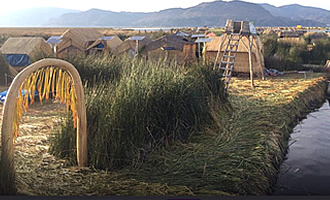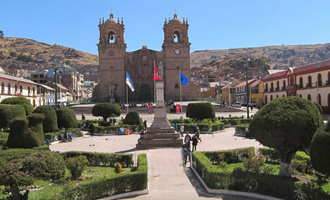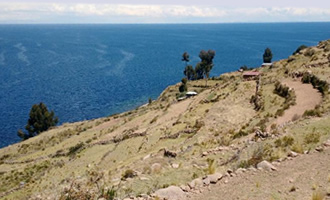Puno & Lake Titicaca

Lake Titicaca

Puno Plaza de Armas

Lake Titicaca
At the edge of Lake Titicaca, at an altitude of 3,860 meters above sea level (m.a.s.l.) lies Puno with his lake that’s looks more like an ocean, and its people, descendants of the Aymara, a strong people who once ruled the high plateaus. Before the expansion of the Inca Empire, what we now know as Puno, was home to the Tiahuanaco culture.
Puno, according to legend, was also the cradle of Inca civilization, as Manco Capac, the first Inca, rose from the waters of Lake Titicaca, under the orders of the Sun God, to found the Inca Empire. Lake Titicaca, at 3,815 m.a.s.l., is the world’s highest navigable lake and, with an area of 8,400 square kilometers, the second largest in South America.
This region of Peru is famous for its varied and colorful folk traditions, as it has some of the most dazzling and richest folk ceremonies to be witnessed in this part of the continent. The most dazzling of all, without doubt, is the celebration of the Virgen de la Candelaria, held in February.
Today, Puno, capital of the department of the same name, is an important agricultural and livestock region; particularly of South American camelids (llamas & alpacas) which graze on its immense plateaus and plains.
The Lord of Sipan, the most significant archeological discovery in the region was the tomb of the Señor de Sipán, discovered close to the coast, in the middle of Lambayeque Valley, just 35 kms. east of Chiclayo. The Señor de Sipán, or “Lord of Sipan” wore funeral clothes adorned with gold, silver and jewels.
*ACTIVITIES.
Travel Connections provides breakfast and dinner and all transfers during their tours.

